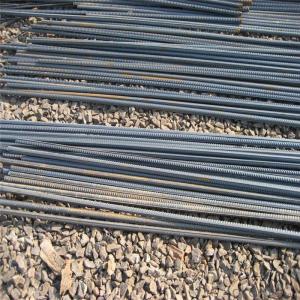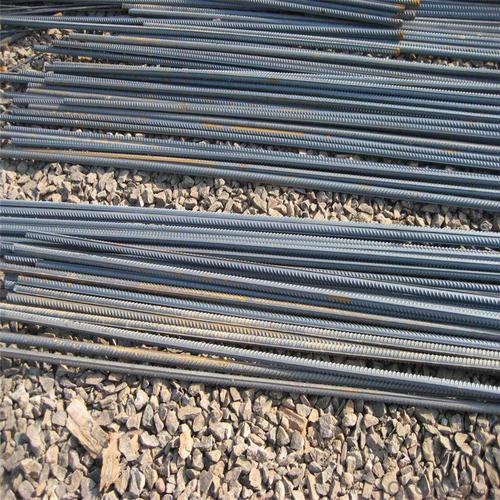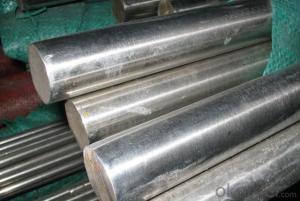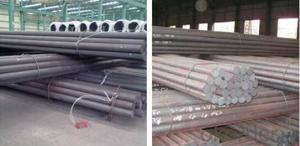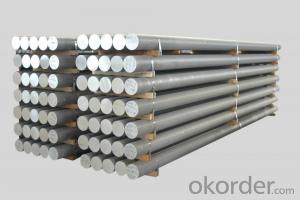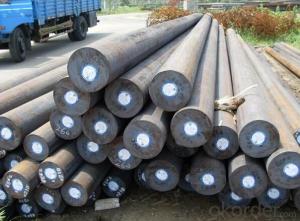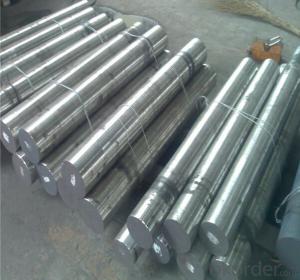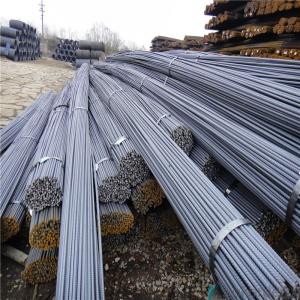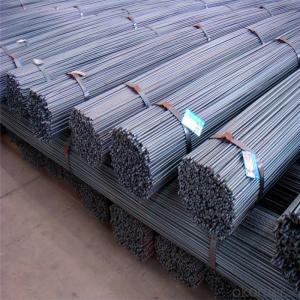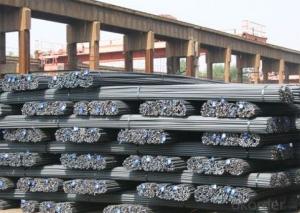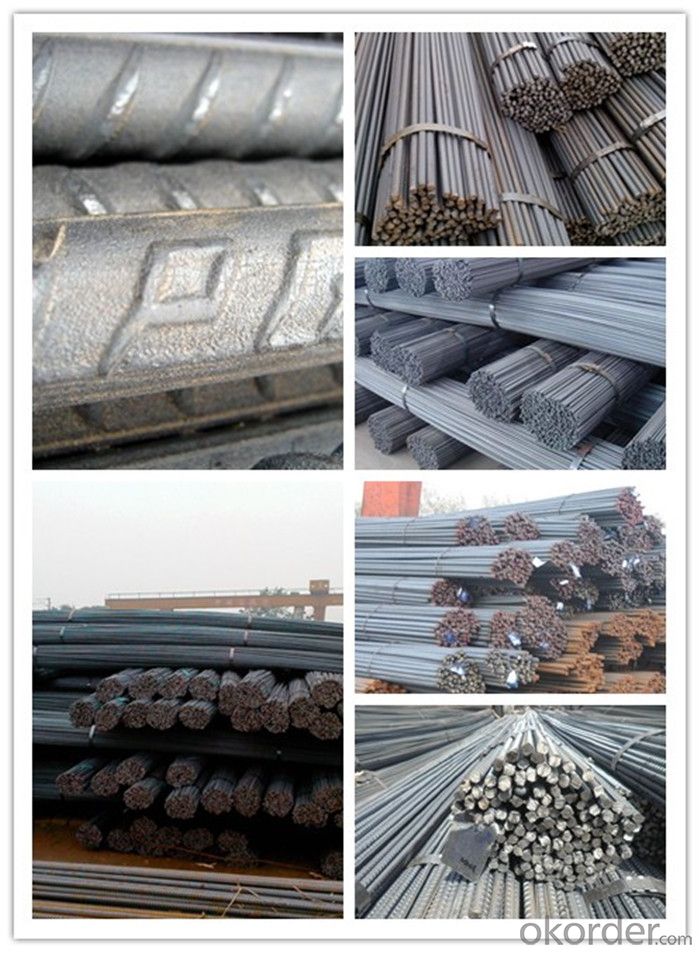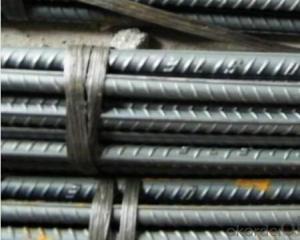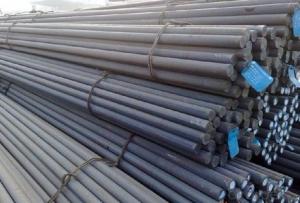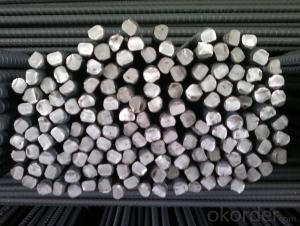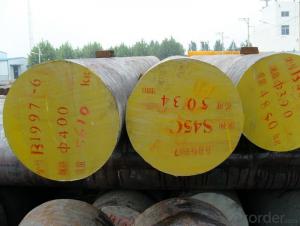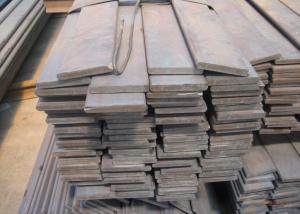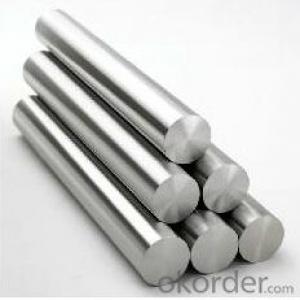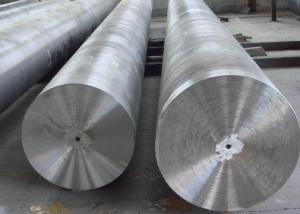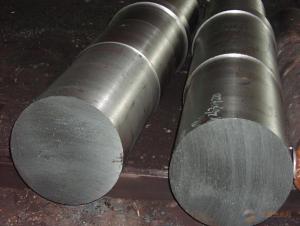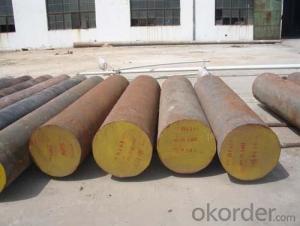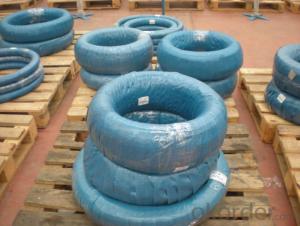Hrb500 Deformed Steel Bars in Stock
- Loading Port:
- Tianjin
- Payment Terms:
- TT OR LC
- Min Order Qty:
- 100 m.t.
- Supply Capability:
- 50000 m.t./month
OKorder Service Pledge
OKorder Financial Service
You Might Also Like
Specification
Hrb500 Deformed Steel Bars in Stock
Description of Hrb500 Deformed Steel Bar:
1, Diameter: 5.5mm-10mm Hrb500 deformed steel bars
10m- 40mm Hrb500 Deformed Steel Bar
2, Length: 6m, 9m, 12m or customized
3, Standard: GB, ASTM, AISI, SAE, DIN, JIS, EN
2, Produce Process: hot rolled or forged to get the steel round bar and plate
3, Heat Treatment: annealing, normalizing, tempering, quenching
4, Surface Treatment: Black Polish Bright
5, Quality Assurance: You can ask testing organizations such as SGS, BV, etc. to test our products before shipping.
Chemical Composition of Hrb500 Deformed Steel Bars:
Grade | Technical data of the original chemical composition(%) | |||||
Reinforcing steel bar HRB335 | C | Mn | Si | S | P | B |
≤0.25 | ≤1.60 | ≤0.80 | ≤0.045 | ≤0.045 | >0.0008 | |
Physics Capability | ||||||
Yield Strength(N/cm2) | Tensile Strength(N/cm2) | Elongation(%) | ||||
≥ 335 | ≥490 | ≥16 | ||||
Reinforcing steel bar HRB400 | C | Mn | Si | S | P | B |
≤0.25 | ≤0.16 | ≤0.80 | ≤0.045 | ≤0.045 | 0.04-0.12 | |
Physics Capability | ||||||
Yield Strength(N/cm2) | Tensile Strength(N/cm2) | Elongation(%) | ||||
≥ 400 | ≥ 570 | ≥ 14 | ||||
Product Show of Hrb500 Deformed Steel Bars:
Company Information:
CNBM International Corporation is the most important trading platform of CNBM group.
Whith its advantages, CNBM International are mainly concentrate on Cement, Glass, Iron and Steel, Ceramics industries and devotes herself for supplying high qulity series of refractories as well as technical consultancies and logistics solutions.

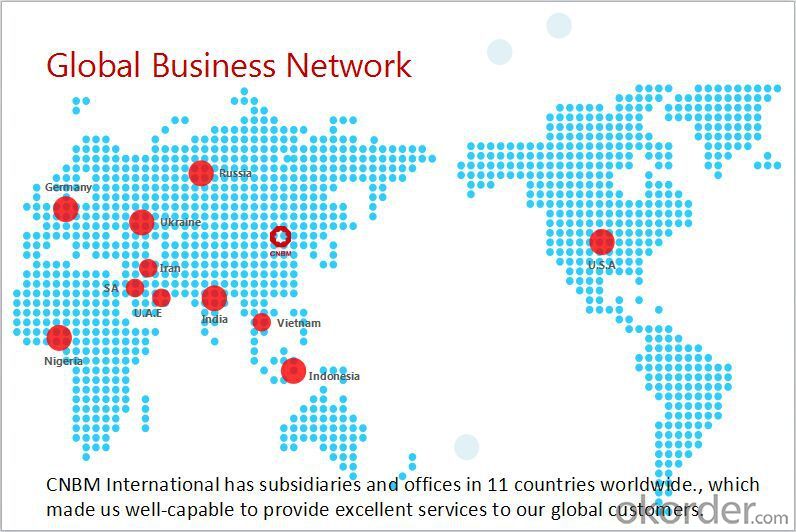
FAQ:
1, Your advantages?
professional products inquiry, products knowledge train (for agents), smooth goods delivery, excellent customer solution proposale
2, Test & Certificate?
SGS test is available, customer inspection before shipping is welcome, third party inspection is no problem
3, Factory or Trading Company?
CNBM is a trading company but we have so many protocol factories and CNBM works as a trading department of these factories. Also CNBM is the holding company of many factories.
4, Payment Terms?
30% TT as deposit and 70% before delivery.
Irrevocable L/C at sight.
5, Trading Terms?
EXW, FOB, CIF, FFR, CNF
6, After-sale Service?
CNBM provides the services and support you need for every step of our cooperation. We're the business partner you can trust.
We'll reply you in our first priority within 24 hours.
- Q: How are tool steels used in the manufacturing of cutting tools?
- Tool steels are used in the manufacturing of cutting tools due to their excellent hardness, toughness, and wear resistance. These steels are specifically designed to withstand high temperatures, pressures, and repeated impacts during cutting operations. They are used to make various cutting tools like drills, milling cutters, saws, and blades. The high hardness of tool steels allows them to retain their sharpness for longer periods, ensuring efficient cutting performance. Additionally, their toughness helps withstand the mechanical stresses encountered during cutting, while their wear resistance enables them to maintain their cutting edges even after prolonged use. Overall, tool steels are crucial in the manufacturing of cutting tools, enabling precise and efficient material removal processes in various industries.
- Q: What are the main factors affecting the formability of special steel?
- The formability of special steel, like any other type of steel, is influenced by several factors. These factors include the composition of the steel, its microstructure, mechanical properties, temperature, and strain rate. The composition of special steel plays a crucial role in its formability. The presence of alloying elements, such as chromium, nickel, molybdenum, and vanadium, can significantly affect the steel's ability to be formed. These elements can alter the steel's strength, ductility, and resistance to deformation. The microstructure of special steel is another key factor affecting its formability. Fine-grained steels tend to have better formability compared to coarse-grained steels. The presence of non-metallic inclusions, such as sulfides and oxides, can also influence formability by acting as stress concentrators and promoting crack formation. The mechanical properties of special steel, such as yield strength, tensile strength, and elongation, directly impact its formability. Steels with higher yield strength are generally more difficult to form, as they require greater force to deform. However, steels with high elongation can undergo larger plastic deformation before failure, making them more formable. Temperature is another critical factor affecting the formability of special steel. At elevated temperatures, the steel becomes more ductile and easier to deform. This is due to the reduction in yield strength and increased mobility of dislocations within the crystal structure. However, excessively high temperatures can also lead to grain growth, which negatively impacts formability. The strain rate, or the rate at which deformation is applied to the steel, also affects formability. Higher strain rates can cause strain hardening, where the steel becomes stronger and less formable. Conversely, lower strain rates allow for greater plastic deformation and improved formability. In conclusion, the formability of special steel is influenced by its composition, microstructure, mechanical properties, temperature, and strain rate. Understanding and optimizing these factors is essential for achieving the desired formability and shaping capabilities of special steel in various applications.
- Q: How does special steel contribute to the oil and gas machinery industry?
- Special steel plays a crucial role in the oil and gas machinery industry by offering a range of properties and characteristics that are essential for the demanding and harsh operating conditions in this sector. Firstly, special steel is known for its exceptional strength and durability, enabling it to withstand the extreme forces and pressures involved in oil and gas extraction, transportation, and refining processes. This ensures that the machinery can operate reliably and efficiently, minimizing downtime and maintenance costs. Moreover, special steel possesses excellent corrosion resistance, which is vital in an industry where equipment is constantly exposed to corrosive environments, such as seawater, acidic gases, and high-temperature fluids. By using corrosion-resistant special steel, manufacturers can increase the lifespan of their machinery, reduce the risk of equipment failure, and enhance the overall safety of operations. Another key advantage of special steel in the oil and gas machinery industry is its high temperature resistance. Equipment used in this industry often operates at extremely high temperatures, particularly in processes like drilling, refining, and petrochemical production. Special steel alloys can withstand these elevated temperatures without losing their structural integrity, ensuring the safe and efficient functioning of the machinery. Furthermore, special steel offers excellent wear and abrasion resistance properties, making it ideal for components that are exposed to constant friction, such as valves, pumps, and drilling tools. This resistance to wear and abrasion helps to prolong the lifespan of these components, reduce maintenance requirements, and enhance the overall efficiency of the machinery. Overall, special steel contributes significantly to the oil and gas machinery industry by providing the necessary strength, durability, corrosion resistance, high temperature resistance, and wear resistance required for the demanding operating conditions in this sector. By utilizing special steel alloys, manufacturers can create robust and reliable machinery that can withstand the challenges of the oil and gas industry and help ensure the smooth and safe extraction, transportation, and processing of oil and gas resources.
- Q: What are the main factors affecting the strength of special steel?
- The main factors affecting the strength of special steel include the composition of the steel, heat treatment processes, and the presence of impurities and defects in the material. Additionally, factors such as grain size, crystal structure, and the presence of alloying elements also play a significant role in determining the strength of special steel.
- Q: What is the composition of special steel?
- Special steel's composition may vary depending on its intended use and the specific properties needed. Generally, it is an alloy of iron and carbon, with additional elements incorporated to enhance its strength, toughness, corrosion resistance, and other desired characteristics. Commonly found alloying elements in special steel compositions include chromium, nickel, manganese, molybdenum, vanadium, tungsten, and cobalt. These elements are meticulously chosen and added in precise quantities to attain the desired mechanical, physical, and chemical properties of the steel. The composition of special steel can be customized to meet industry-specific requirements, such as those in aerospace, automotive, oil and gas, or construction.
- Q: How is special steel used in the medical supply chain?
- Special steel is used in the medical supply chain for various applications such as surgical instruments, implants, and medical devices. Its unique properties like corrosion resistance, high strength, and durability make it suitable for manufacturing critical components that require precision and reliability in the healthcare sector.
- Q: How is precipitation-hardening steel used in the aerospace industry?
- Precipitation-hardening steel is commonly used in the aerospace industry due to its exceptional strength-to-weight ratio and high corrosion resistance. This type of steel undergoes a specialized heat treatment process that allows for the precipitation of particles within its microstructure, resulting in improved mechanical properties. These steels are used in various components and structures of aircraft, such as landing gears, engine parts, and structural frames, where strength, durability, and weight savings are crucial factors for performance and safety.
- Q: What are the different wear-resistant grades of special steel?
- There are several different wear-resistant grades of special steel, including but not limited to, AR400, AR500, AR600, Hardox 400, Hardox 450, Hardox 500, Hardox 600, Bisplate 400, Bisplate 450, Bisplate 500, Bisplate 600, and Creusabro 4000. These grades are specifically designed to withstand abrasive wear and impact, making them ideal for applications in industries such as mining, construction, and manufacturing.
- Q: How does special steel perform in high-temperature hydrogen environments?
- Special steel typically performs well in high-temperature hydrogen environments due to its excellent resistance to hydrogen embrittlement and oxidation. It maintains its mechanical strength and integrity, preventing potential failures or degradation in such conditions. Additionally, special steel alloys can exhibit enhanced corrosion resistance, making them suitable for various industrial applications involving high-temperature hydrogen exposure.
- Q: What are the different methods of non-destructive testing for special steel?
- Special steel can be evaluated for quality and integrity without causing damage using various non-destructive testing (NDT) methods. These methods encompass: 1. Ultrasonic Testing (UT): By emitting high-frequency sound waves with a transducer, defects like cracks or voids within the special steel can be detected. The reflections or echoes are then analyzed to identify any anomalies. 2. Magnetic Particle Testing (MT): This technique relies on magnetic fields to primarily detect surface or near-surface defects in special steel. Inducing a magnetic field in the material and applying magnetic particles allows any discontinuities or defects to gather, forming visible indications. 3. Liquid Penetrant Testing (PT): Involving the application of a liquid dye or penetrant to the special steel's surface, this method draws the penetrant into any surface defects through capillary action. After removing excess penetrant and applying a developer, the indications become visible. 4. Radiographic Testing (RT): This technique employs X-rays or gamma rays to inspect the internal structure of special steel. By exposing the material to radiation and capturing the transmitted radiation on film or a digital detector, any inconsistencies or defects within the material become visible on the resulting image. 5. Eddy Current Testing (ECT): Mainly used for detecting surface or near-surface defects, ECT involves inducing an alternating current into a coil to create an electromagnetic field. Variations in the material's electrical conductivity or magnetic permeability caused by defects generate changes in the coil's impedance, which can be analyzed. 6. Visual Testing (VT): While not a direct NDT method, visual inspection serves as a preliminary step to identify surface defects or irregularities in special steel. By thoroughly visually examining the material with appropriate lighting and magnification tools, any issues can be detected. These diverse methods of non-destructive testing offer valuable insights into special steel's quality, ensuring its structural integrity and reliability across various applications. The selection of a specific method depends on factors like the type and location of the defect being sought, as well as the industry or application's specific requirements.
Send your message to us
Hrb500 Deformed Steel Bars in Stock
- Loading Port:
- Tianjin
- Payment Terms:
- TT OR LC
- Min Order Qty:
- 100 m.t.
- Supply Capability:
- 50000 m.t./month
OKorder Service Pledge
OKorder Financial Service
Similar products
Hot products
Hot Searches
Related keywords
